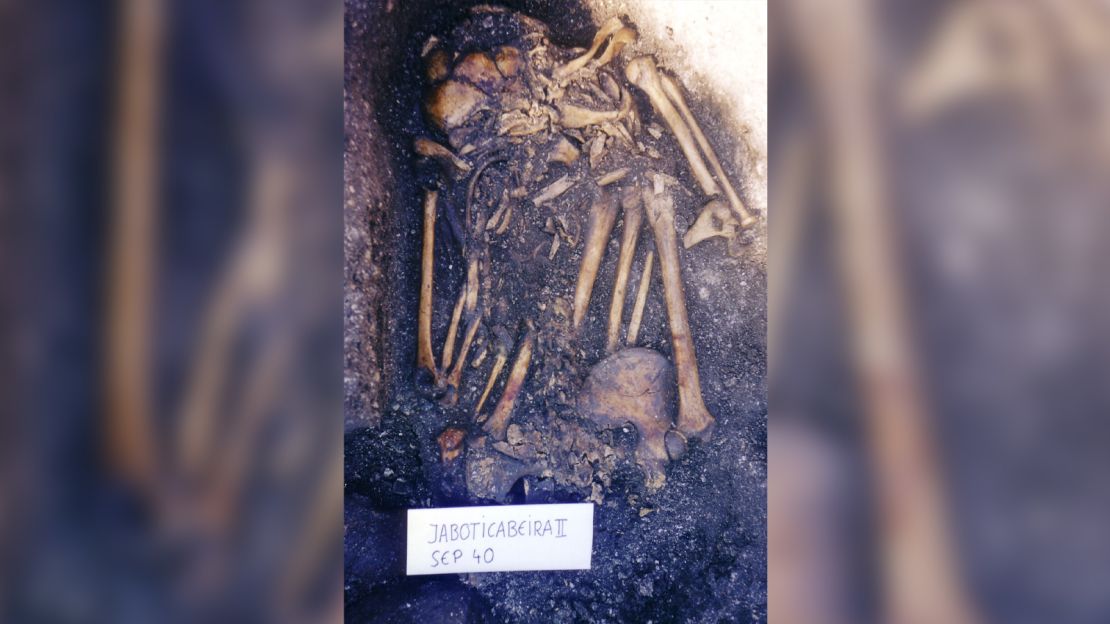Sign up for CNN’s Wonder Theory science newsletter. Explore the universe with news on fascinating discoveries, scientific advancements and more.
The English, Germans and Italians called it the French disease. Polish people dubbed it the German disease, while Russians blamed it on Poles. In France, it was named the “Neapolitan disease” after the French army got infected during its invasion of Naples, Italy, in the first documented syphilis epidemic.
The origins of syphilis — a sexually transmitted infection that devastated 15th century Europe and is still prevalent today — have remained murky, difficult to study and the subject of some debate.
One long-standing theory is that the disease emerged in the Americas and migrated to Europe after the expeditions led by Christopher Columbus returned from the New World, but a new study suggests the true story is more complicated.
Genetic information about ancient pathogens can be preserved in bones, dental plaque, mummified bodies and historical medical specimens, extracted and studied — a field known as paleopathology.
Research published Wednesday in the journal Nature used paleopathology techniques on 2,000-year-old bones unearthed in Brazil in an attempt to shed more light on when and where syphilis originated. The study resulted in scientists recovering the earliest known genomic evidence of Treponema pallidum, the bacterium that causes syphilis and two other related diseases, which is reliably dated to long before the first trans-Atlantic contacts.
“This study is incredibly exciting because it is the first truly ancient treponemal DNA that has been recovered from archaeological human remains that are more than a few hundred years old,” said Brenda J. Baker, a professor of anthropology at Arizona State University, who wasn’t involved with the study.
A complex disease caused by a complex bacterium
Without treatment, syphilis can cause physical disfigurement, blindness and mental impairment. As a sexually transmitted disease, it has long carried a stigma — hence the past attempts by different populations to blame outbreaks on neighboring groups or countries.

It’s particularly complex to study both the disease and the pathogen responsible for it, said Molly Zuckerman, a professor and codirector of the Bioarchaeology Laboratories, New and Old World, at Mississippi State University, who wasn’t involved in the research.
“It was only in 2017 that researchers were able to culture T. p pallidum for the first time, even though we’ve known it’s the cause of syphilis for over one hundred years,” Zuckerman said in an email. “It’s still costly and cumbersome to study in the lab. There are many reasons that, despite our best efforts, it’s one of the least well understood common bacterial infections.”
The timing and sudden onset of the first documented syphilis epidemic in the late 15th century is what led many historians to conclude that it arrived in Europe after the Columbus expeditions. Others believe T. pallidum bacteria always had a global distribution but perhaps grew in virulence after initially manifesting as a mild disease.
“It is very clear that Europeans took a number of diseases (including smallpox) to the New World, decimating the native populations, so the hypothesis that the New World ‘gave syphilis to Europe’ was attractive to some,” noted Sheila A. Lukehart, professor emeritus in the department of medicine, infectious disease and global health at the University of Washington, who didn’t take part in the study.
Syphilis is closely related but distinct from two other subspecies or lineages of treponemal disease, nonsexually transmitted illnesses that have similar symptoms that are known as bejel and yaws and were also a focus of the new research.
The team behind the new study examined 99 bones from the archaeological site known as Jabuticabeira II from the Laguna region of Santa Catarina on the Brazilian coast. Some bones had marks characteristic of infection with T. pallidum — the bacteria effectively eat away at bones, leaving concave lesions.
Bone samples from four people yielded sufficient genetic data for the team to analyze, with one producing what study author Verena Schünemann, an assistant professor at the University of Zurich’s Institute of Evolutionary Medicine, described as a high-coverage genome, detailed enough for fine-grained analysis.
The analysis revealed that the pathogen responsible for the lesions was most closely related to the modern subspecies of T. pallidium that causes bejel, a disease found today in arid regions of Africa and the Middle East that has similar symptoms to syphilis.
The finding adds strength to previous suggestions that civilizations in the Americas experienced treponemal infections in pre-Columbian times, and that treponemal disease was already present in the New World at least 500 years before Columbus set sail.
Revelations from a bacterial family tree
Schünemann said the new findings do not mean the venereal syphilis that caused the 15th century epidemic came to Europe from the Americas at the time of Columbus. A similar study conducted previously by her team found T. pallidum bacteria in human remains in Finland, Estonia and the Netherlands from the early modern period (early 1400s onward), suggesting that some forms of treponemal disease, if not syphilis, were already in circulation on the continent at the time of Columbus’ expeditions to the New World.
What’s more, the genome recovered from the Brazilian sample provided a bacterial family tree going back thousands of years, suggesting that T. pallidum bacteria first evolved to infect humans as far back as 12,000 years ago. It was possible, Schünemann said, that the bacteria could have been brought to the Americas by its first inhabitants who crossed into the continent from Asia.
“I think that the story is way more complex than the Columbian hypothesis could have ever imagined,” she said.
Mathew Beale, a senior scientist in bacterial evolutionary genomics at the Wellcome Sanger Institute near Cambridge, England, agreed with Schünemann’s assessment, saying in an email that the study did not “prove or disprove the central tenet of the Columbian hypothesis itself — that Columbus’s voyage led to the importation of Treponema and led to the outbreaks of the 1500s and then to modern day syphilis.”
“This is mainly because the bacteria sequenced is not a direct ancestor of the strain that causes modern syphilis. … (I)t is a sister species. This could mean the various treponematoses were already very widely spread around the world, and could even predate the ancient migration and population of the Americas,” said Beale, who wasn’t involved in the research.
“It could alternatively mean that lots of different treponematoses were present in the New World, and one of those, only distantly related to the ancient genomes from this paper, was indeed imported by Columbus and his peers,” he added.
Further research on ancient genomes from across the world might be able to solve the mystery, illuminating which subspecies of the bacteria were present in Europe and the New World before the voyages of Columbus, according to Lukehart.
“The bigger scientific question now is not about syphilis, but is about the distribution of the three subspecies around the globe, particularly in pre-Columbian samples,” Lukehart said.
“The modern tools available for extracting DNA from ancient samples, for enriching the treponemal DNA, and obtaining deep sequencing from samples has rapidly increased our understanding of the Treponema.”





